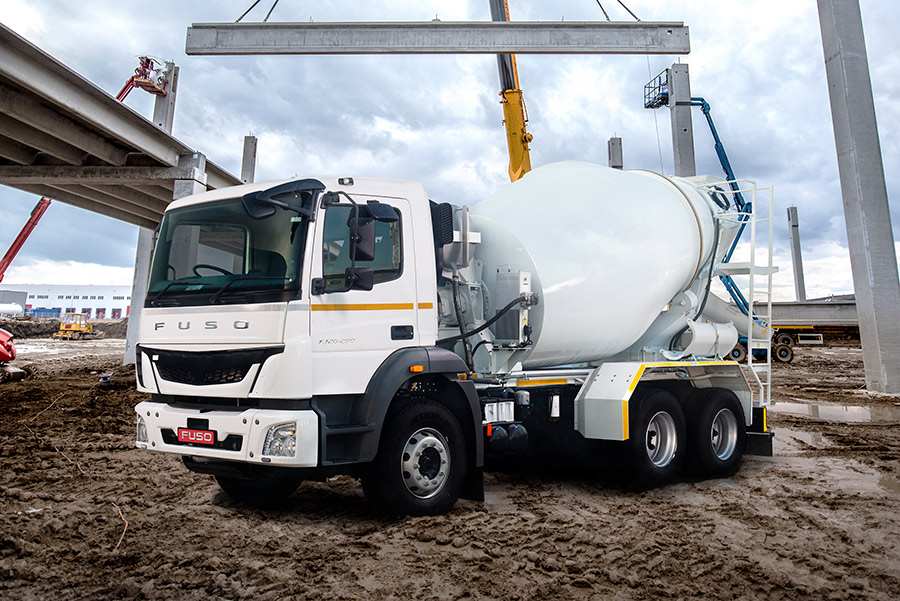There is a general school of thought that the supply chain is always a good measure of the state of the construction industry, or even sectors such as quarrying and mining at large. If sales of construction type commercial vehicles are anything to go by, construction activity is therefore on an upward trajectory in South Africa. This was the overarching message from a recent one-on-one with Gerber, who says there is definitely an apparent positive momentum in the construction space, which has translated in an uptick in concrete mixer and tipper truck sales.
While the growth in construction activity is not at the levels experienced during the so-called boom days in the run up to the 2010 Soccer World Cup, Gerber is encouraged by the recent government tender activity in the country and the regional investment in infrastructure development in some of the country’s provinces.
“It is interesting to see the amount of government tender activity this year and the resultant sales of construction vehicles going into that space, which gives us an indication that government is somehow starting to invest in infrastructure again,” she says.
To provide context, the roads authority alone, the South African National Roads Agency Limited (SANRAL), has awarded a whopping 323 tenders to the value of R59-billion in the past financial year. This is nearly triple the R22-billion tender value awarded in the previous financial year.
“In general, it is my view that the construction industry is not dormant anymore, although the pace of growth is not at the levels we hope for. We have also seen a steady rise in demand for our vehicles in the mining space, particularly in the rest of Southern Africa,” says Gerber.
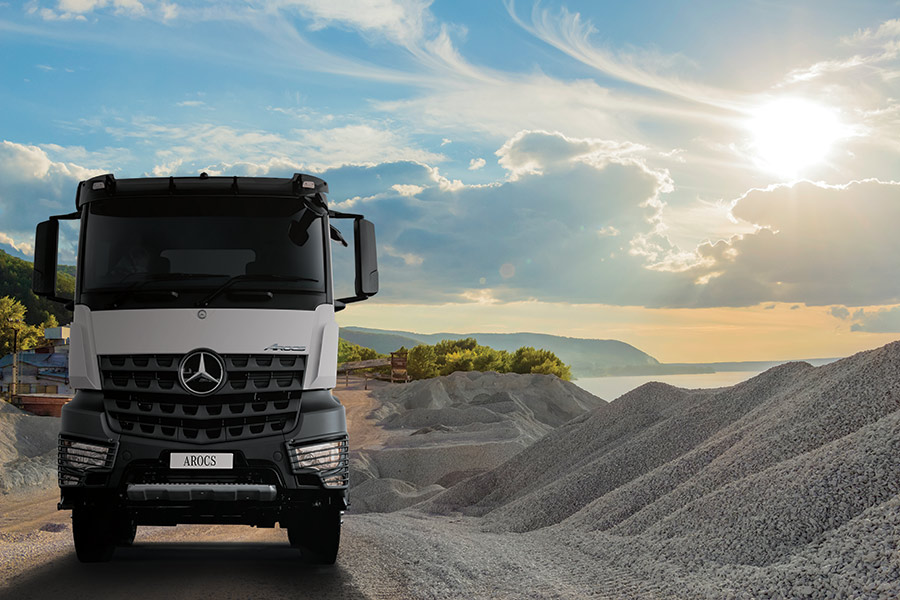
Top sellers
Top performing construction vehicles in the DTSA stable are the FUSO FJ26-280C and the FJ26-280C HYP. “From a product point of view, these two products are our top performers at the moment and we cannot keep up with orders in some instances. The two vehicles are designed and engineered to fulfil customer business needs in the construction segment,” says Gerber.
A key selling point of the FJ range, she says, is the bodybuilder-friendliness of the vehicles. The FJ26-280C HYP, for example, is available with both the engine Power Take Off (PTO) and a transmission PTO, allowing customers the flexibility to either fit a mixer or tipper body when taking delivery of the vehicle.
“The proven versatility of the FJ range makes it easy to interchange between a concrete mixer and a tipper body, giving customers the flexibility to change, with no complexity, to whatever the market requires at the time,” she says.
Efficiency, a major parameter in construction customers’ buying decisions, is another key competitive edge of the FUSO FJ offering. The FJ26-280C HYP, for example, is specifically fitted with hypoid rear axles (single reduction axles), contributing extensively to low fuel consumption, and reducing the tare weight of the vehicle. This is to ensure that the vehicle can accommodate a 6 m³ concrete mixer and still comply with the permissible axle loads.
The FJ26-280C HYP is powered by the 6S20 6.4-litre direct-injection engine producing 205 kW of power at 2 200 rpm delivering high torque (1 100 Nm between 1 200 rpm to 1500 rpm) over a wide range of engine speeds and is paired with the G131 nine-speed transmission with crawler gear. This vehicle has oil-lubricated fuel injection pumps which inject the precise quantity of required fuel at high pressure, resulting in improved combustion of fuel, delivering unmatched fuel efficiency.
The engine also features an e-viscous electric fan, and its intermittent operation improves fuel economy by disengaging the fan when the engine is operating below a pre-set temperature. The model features an aerodynamic FUSO FJ cab which reduces tractive resistance and increases fuel efficiency.
On the Mercedes-Benz side of things, the Arocs 3236B/51 is the shining star which, according to Gerber, is the benchmark in the 8 m³ concrete mixer market. The application-specific mounting elements provide for a bodybuilder-friendly and fast-mounting process. The mixer chassis comes standard with the mixer mounting brackets, together with the modular bolted frame and the 50 mm chassis hole pattern.
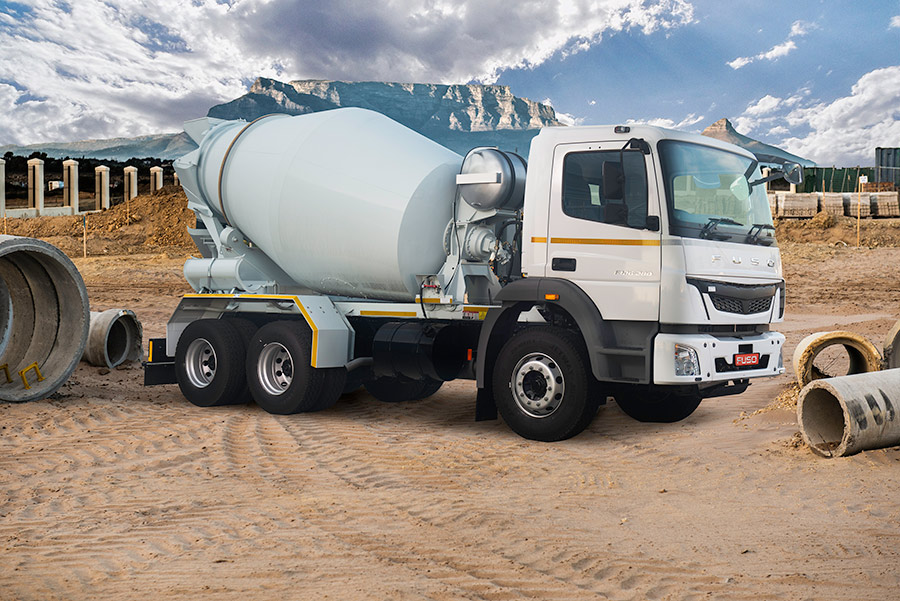
New arrival
To further boost its offering in the construction/quarrying value chain, DTSA has introduced the new Mercedes-Benz Arocs 4152K/51 tipper chassis which, to date, has performed well in the market, largely due to its focus on reduced maintenance costs.
“This model comes with a high-performance engine brake, which effectively reduces brake wear in typical tipper applications in construction and quarrying. This speaks directly to the increased focus on lower total cost of ownership (TCO) in this market segment,” she says.
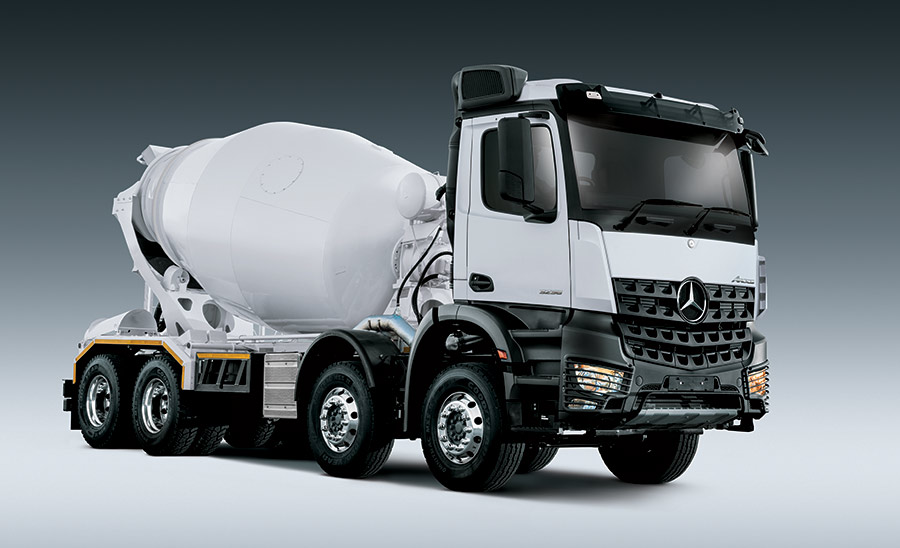
Emerging trends
Commenting on some emerging trends, Gerber says electrification is one topic on everyone’s mind. Electric trucks, she says, will definitely have their space in the market in future, but she believes that ultimately sustainable transportation will be achieved through a combination of carbon neutral technologies.
“We are bringing in electric solutions to the local market as quickly as possible. However, in my view, electrification is the bridge to our end goal to provide hydrogen solutions to this market. While infrastructure and the current costs of ‘green’ hydrogen are still major constraints, we believe this remains the right solution for Africa in the long term,” says Gerber.
On the other hand, she says, electrification seems ideal for the mining environment, especially from a charging infrastructure point of view. Given that vehicles in a quarrying or mining setup work on a fixed site, it is easier to set up charging infrastructure than in a long-haul environment.
Another major trend in the construction/quarrying space, says Gerber, is the “sweating of assets”, especially following the Covid-19 pandemic and the resultant slump in construction activity. “Because of the challenging market conditions, customers were forced to delay their replacement cycles. However, as these older vehicles have started to work again in the past two years, the replacement cycles that were postponed as a result of the slump are starting to trigger themselves, hence the increased enquiries,” she says.
From a market expansion point of view, DTSA has taken a deliberate approach to expand its supply scope into government sectors. Traditionally, the company has never been as aggressive in government tenders, but now it is part of its strategy to look after several government departments.
In addition, Gerber sees significant growth in DTSA’s export markets, in countries such as Zimbabwe, Zambia, particularly driven by investments in mining and infrastructure development.
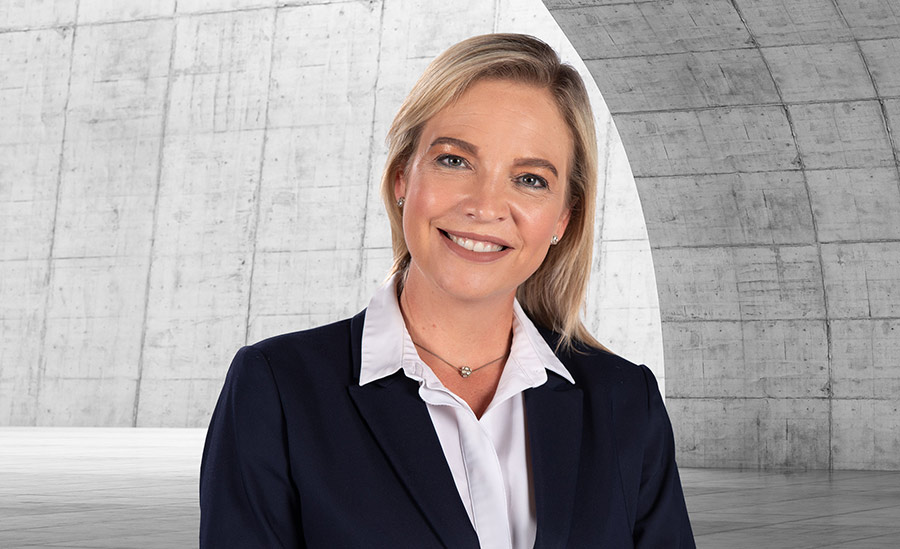
Response
In response to the emerging trends, DTSA has over the years adopted a constant re-evaluation strategy which allows it to meet the everchanging customer needs. “For us, it is important to constantly re-evaluate ourselves and our product offering. For example, we see a growing interest in a certain solution in our trucks, instead of having it as an option, we take a standard approach to it,” says Gerber.
For instance, DTSA has this year made its Fleetboard telematics offering standard on all its construction and all-wheel drive vehicles. This, she says, is in response to the growing trend towards the consideration of TCO by customers in this market segment.
Traditionally, the construction and quarry truck owner has never taken a TCO approach to buying decisions. While many still largely consider the capital cost of the product, Gerber says several industry players are starting to develop a better understanding of the TCO factor, showing interest in not only the purchase price, but also in the costs related to keeping the truck running.
Testimony to this TCO approach, says Gerber, is the high adoption rate of telematics. “The South African truck owner has become sophisticated, and telematics has become a gold standard. To give context, DTSA is the biggest Fleetboard market outside of Europe. This demonstrates the type of customer that we are dealing with – they understand that it is not just about the metal; it is about the whole package, including driver and truck performance as well as a proactive approach to maintenance. Fleetboard gives them that opportunity to keep an eye on these important parameters,” she says.
Another major response to new trends by DTSA is the transition to Euro 5 engines. The company is actively engaging various stakeholders, including government, The National Association of Automobile Manufacturers of South Africa (NAAMSA) and The Road Freight Association to help with the transformation. The quicker the market transforms to Euro 5, the more product and new technology will DTSA have available for local customers. The company will initially have Euro 5 products available in parallel to Euro 3 but will eventually migrate to Euro 5 completely in the future.
In conclusion, Gerber says, “I am very excited to see the momentum in the construction and mining space. This shows that there is willingness to continue a positive trajectory to drive economic recovery. Despite all the challenges, the activity in these segments shows some much-needed confidence is brewing.”
